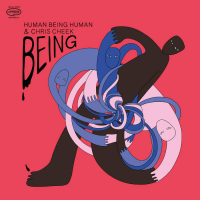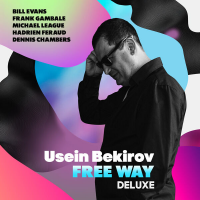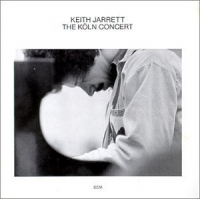Home » Jazz Articles » Multiple Reviews » London Crate-Diggers BBE Reveal Lost J-Jazz Gems
London Crate-Diggers BBE Reveal Lost J-Jazz Gems
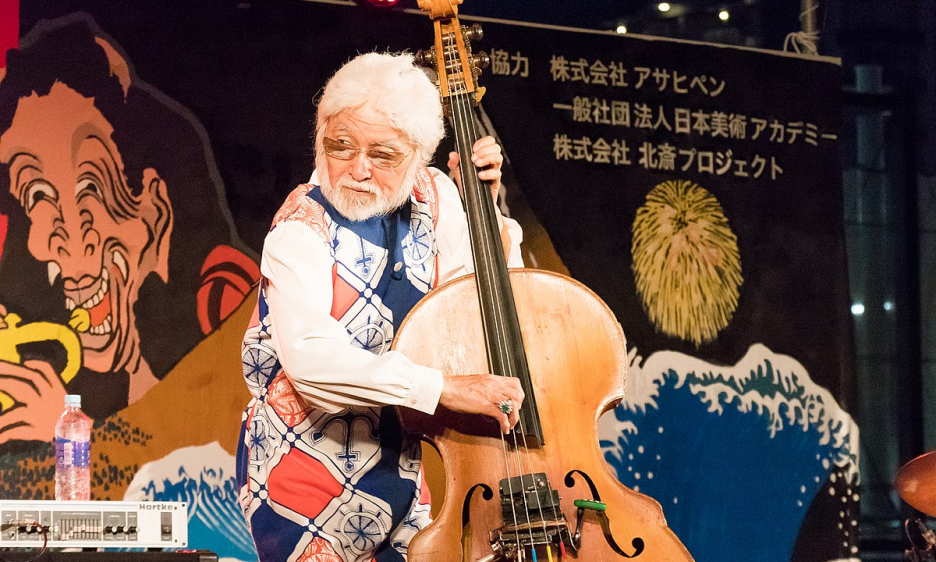
Crate-digging London label BBE (Barely Breaking Even) continues its celebration of late 1960s through mid-1980s homegrown Japanese jazz with vinyl and CD reissues of five obscure albums. Each of them is worth hearing and one of them, by Isao Suzuki (pictured), is a blinder. None of the albums have previously been reissued and most of the original releases were "private pressings" (self releases), some of only a hundred or so copies. Despite the DIY culture from which the albums emerged, audio quality is uniformly high.
The albums are part of BBE's J Jazz Masterclass Series curated by aficionados Tony Higgins and Mike Peden. Liner booklets include translations of the original sleeve notes along with informative essays by Higgins.
The albums are listed chronologically by their original release dates.
 Masaru Imada Trio + 1
Masaru Imada Trio + 1 Planets
First released on Planets
1977
Pianist and composer Masaru Imada recorded his first album as leader, Waki (Victor World Group), in 1970. It was a mixture of originals and jazz standards. On Planets, however, Imada presented an all-originals set, in 1977 still a relatively rare occurrence in Japan, where covers of American repertoire continued to hold sway. Imada was also ahead of the pack in the retentions of traditional Japanese music heard in his work, particularly in his chord voicings. This is most noticeable in the album's title track, a delicate waltz, and the ambitious 17-minute suite, "Sea's Pasture," where Imada blends Japanese impressionism with echoes of Claude Debussy. The influence of American hard bop is apparent in just one track, the up-tempo "Blue Road." Imada is accompanied by bassist Kunimitsu Inaba, another singular stylist, and drummer Tetsujiro Obara and conga player Yuji Imamura. All four musicians double on bells, shakers and cymbals.
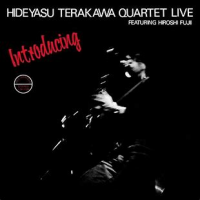 Hideyasu Terakawa
Hideyasu Terakawa Hideyasu Terakawa Quartet Live
First released on Red Horison
1978
Live is tenor and soprano saxophonist Hideyasu Terakawa's only album as leader. The hard-bop-centric player leads a quartet completed by vibraphonist Hiroshi Fujii, bassist Tetsuo Miura and drummer Akihiro Nakaya. Four of the five tunes are covers of pieces written or co-written by American tenor saxophonists: Milt Jackson and Jimmy Heath's "Rerev," Benny Golson's "I Remember Clifford," Wayne Shorter's "Black Nile" and Frank Foster's "Simone." The fifth tune is Victor Young's evergreen "Stella By Starlight." Miura and Nakaya are solid accompanists and Terakawa is a fluent but unremarkable saxophonist, though his tender tenor solo on "I Remember Clifford" sticks in the mind. Overall, the Milt Jackson and Bobby Hutcherson-influenced Fujii is more compelling and he shines on "Rerev," "Simone" and "Black Nile," the highlight of the album.
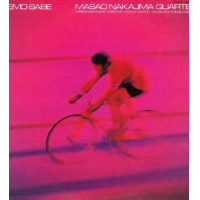 Masao Nakajima Quartet
Masao Nakajima Quartet Kemo Sabe
First released on Yupiteru
1979
Masao Nakajima's pianism conveys a joyous, life-affirming vibe and a love of melody, reflections of his early love for Erroll Garner. Makajima's quartet is completed by flautist and soprano and alto saxophonist Toshiyuki Honda, bassist Osamu Kawakami and, the only American musician on this batch of albums, ex-Jimmy Smith drummer Donald Bailey, who was living in Japan at the time. There is a crispness and concision about Bailey's work which has more to do with his years with Smith than with his being American, but it certainly contributes to the album's success. Four of the six tracks are covers: Mike Nock's "Kemo Sabe," Herbie Hancock's "Tell Me A Bedtime Story," Ron Carter's "Third Plane" and John Coltrane's "Moment's Notice." There is one original, Nakajima's lovely "Beloved Diane," written for his girlfriend, and—the only dud on the disc—Bob James' sickeningly saccharine "My Love." This closes the album, so if one is quick enough with the handset it can be throttled at birth.
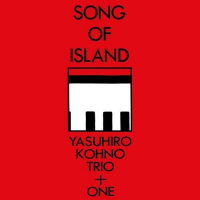 Yasuhiro Kohno Trio + One
Yasuhiro Kohno Trio + One Song Of Island
First released on A.S.Cap
1985
Like Masaru Imada's Planets, fellow pianist Yasuhiro Kohno's Song Of Island was made with a piano trio augmented by a vibraphonist. In this case the player is one of Japan's acknowledged masters of the instrument, Masahiro Kanno, whose technical facility and willingness to take risks match those of Kohno. The result is an engaging set which is marked by some whirlwind tempos and, on occasion, borderline free-jazz aesthetics; Cole Porter's "Love For Sale," for instance, the only cover, is taken at a gallop and with rare abandon. Kohno's own composing is strong—his "Time For Peace" is an exquisitely beautiful ballad and "Mister Nilsson" is a rolling 12-bar blues peppered with winning Thelonious Monkisms. Sadly, Kohno does not carry the Monkish dissonances through into his extended solo, but instead retreats into stock blues motifs. At 13:20, "Mister Nilsson" is the longest track and also the least successful.
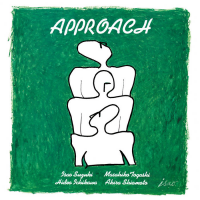 Isao Suzuki
Isao Suzuki Approach
First released on Art Union
1986
The jewel in the crown of this batch of albums, Approach features three musicians who were in 1986 already leading figures on the Japanese jazz scene: bassist Isao Suzuki, percussionist Masahiko Togashi and pianist Hideo Ichikawa. They are joined on two tracks by up and coming guitarist Akira Shiomoto. The core trio was nominally led by Suzuki, whose aesthetic combined (he passed in 2022 aged 89 years) uncanny echoes of African American hard bop and free and spiritual jazz. Spotted early by American musicians visiting Tokyo, including Hampton Hawes and Art Blakey, Suzuki was in 1970 invited by Blakey to join the Jazz Messengers. He spent the best part of a year in the US playing with the band before leaving to join Wynton Kelly for what proved to be Kelly's final tour, and then returning to Japan. Approach is more or less equal parts ostinato-driven spiritual jazz and experimental out-there improvisation. Togashi, who passed in 2007, was another heavyweight and favoured the same combination of groove and abstraction. Without underestimating the consistently inventive Ichikawa, it is above all Suzuki and Togashi who are largely responsible for making Approach the treasure that it is.
Tracks and Personnel
PlanetsTracks: Planets; Blue Road; Marionette; Sea's Pasture; Epilogue.
Personnel: Masaru Imada: piano, percussion; Kunimitsu Inaba: bass, percussion; Tetsujiro Obara: drums, percussion; Yuji Imaura: congas, percussion.
Introducing Hideyasu Terakawa Quartet Live
Tracks: Rerev; I Remember Clifford; Stella By Starlight; Black Nile; Simone.
Personnel: Hideyasu Terakawa: tenor and soprano saxophone; Hiroshi Fujii: vibraphone; Tetsuo Miura: bass; Akihiro "Thunder" Nakaya: drums.
Kemo Sabe
Tracks: Kemo Sabe; Beloved Diane; Tell Me A Bedtime Story; Third Plane; Moment's Notice; My Love.
Personnel: Masao Nakajima: piano; Toshiyuki Honda: flute, soprano and alto saxophone; Osamu Kawakami: bass; Donald Bailey: drums.
Song Of Island
Tracks: Song Of Island; Time For Peace; Love For Sale; Mr Nilson; Village Festival.
Personnel: Yasuhiro Kohno: piano; Tsutomu Nugogami: bass; Hironobu Fujisawa: drums; Masahiro Kanno: vibraphone.
Approach
Tracks: Make Trip; Otari; East Words; Mysterious; Long Straight Road; Tornado.
Personnel: Isau Suzuki: bass, piccolo bass; Masahiko Togashi: percussion; Hideo Ichikawa: piano; Akira Shiomoto: guitar.
Tags
Multiple Reviews
Isao Suzuki
Chris May
Sonny Clark
Masaru Imada
Kunimitsu Inaba
Tetsujiro Obara
Yuji Imamura
Hideyasu Terakawa
Hiroshi Fujii
Tetsuo Miura
Akihiro Nakaya
Milt Jackson
Jimmy Heath
benny golson
Wayne Shorter
Frank Foster
Bobby Hutcherson
Masao Makajima
Erroll Garner
Toshiyuki Honda
Osamu Kawakami
Jimmy Smith
Donald Bailey
Herbie Hancock
Ron Carter
John Coltrane
Bob James
Yasuhiro Kohno
Masahiro Kanno
Thelonious Monk
Isau Suzuki
Masahiko Togashi
Hideo Ichikawa
Akira Shiomoto
Hampton Hawes
Art Blakey
Wynton Kelly
PREVIOUS / NEXT
Support All About Jazz
 All About Jazz has been a pillar of jazz since 1995, championing it as an art form and, more importantly, supporting the musicians who make it. Our enduring commitment has made "AAJ" one of the most culturally important websites of its kind, read by hundreds of thousands of fans, musicians and industry figures every month.
All About Jazz has been a pillar of jazz since 1995, championing it as an art form and, more importantly, supporting the musicians who make it. Our enduring commitment has made "AAJ" one of the most culturally important websites of its kind, read by hundreds of thousands of fans, musicians and industry figures every month.









